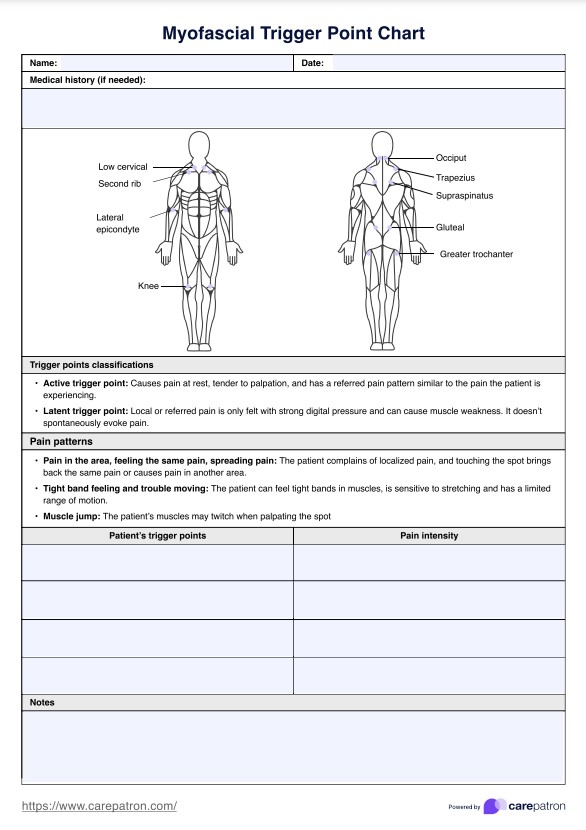Healthcare professionals like physical therapists, massage therapists, chiropractors, and doctors commonly use a Myofascial Trigger Point Chart. They aid in diagnosing myofascial pain syndrome, planning treatment, and guiding self-treatment techniques.

Myofascial Trigger Point Chart
Discover the effectiveness of Myofascial Trigger Point Charts for accurate diagnosis and treatment of pain. Enhance patient care with visual precision.
Myofascial Trigger Point Chart Template
Commonly asked questions
The Myofascial Trigger Point Chart is frequently employed when individuals experience pain attributed to trigger points. It diagnoses myofascial pain syndrome, assists in treatment planning, and enables self-treatment techniques like massage and stretching.
Healthcare professionals and individuals locate trigger points and referred pain patterns using a Myofascial Trigger Point Chart, often alongside physical exams and medical histories. Identify the muscle causing pain, locate trigger points on the chart, and apply appropriate techniques for treatment.
EHR and practice management software
Get started for free
*No credit card required
Free
$0/usd
Unlimited clients
Telehealth
1GB of storage
Client portal text
Automated billing and online payments











